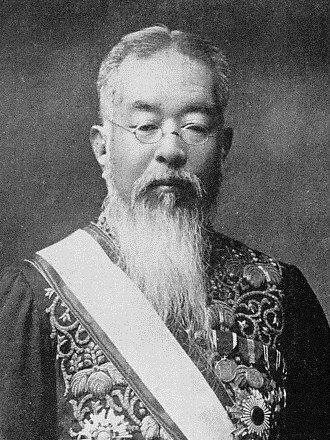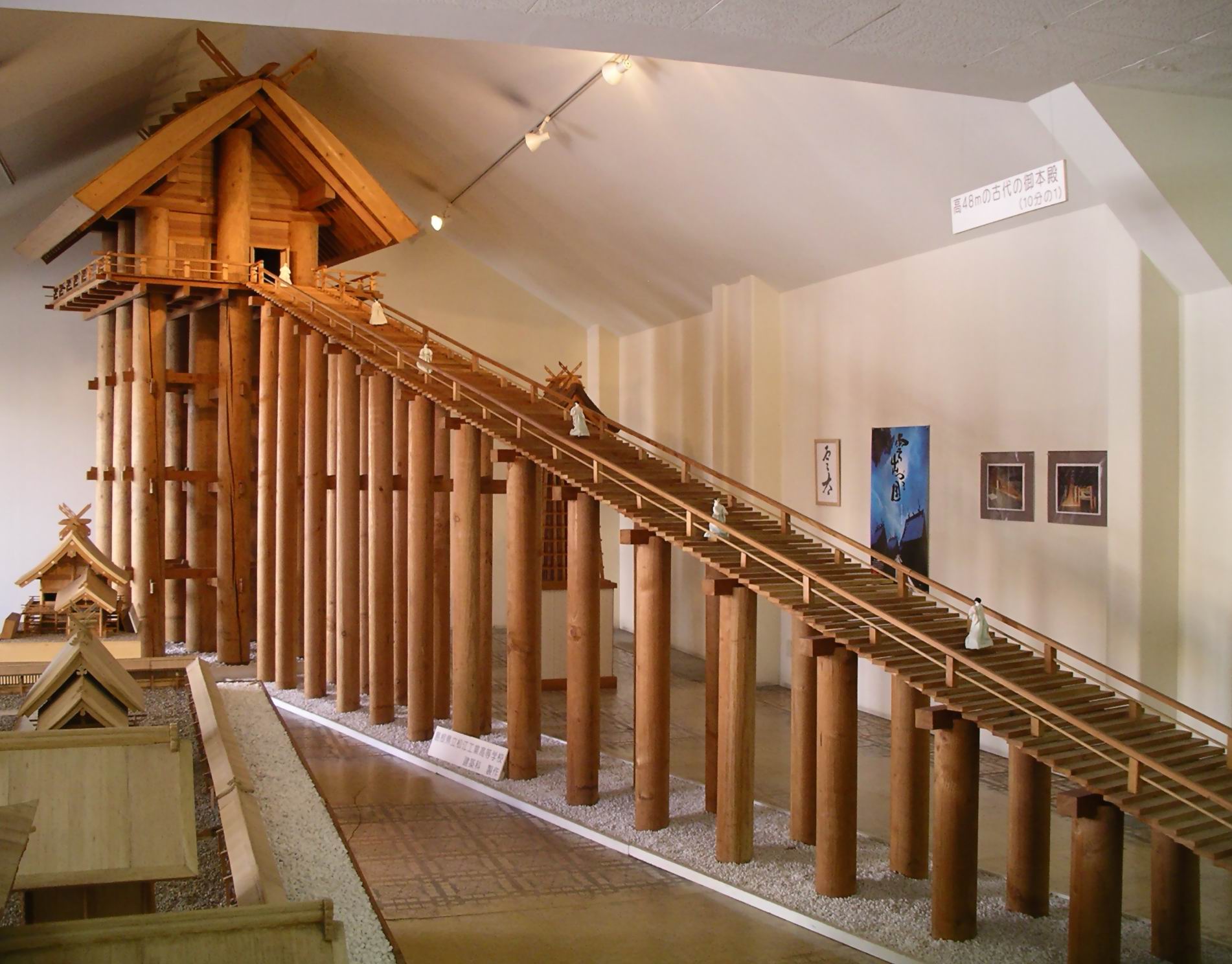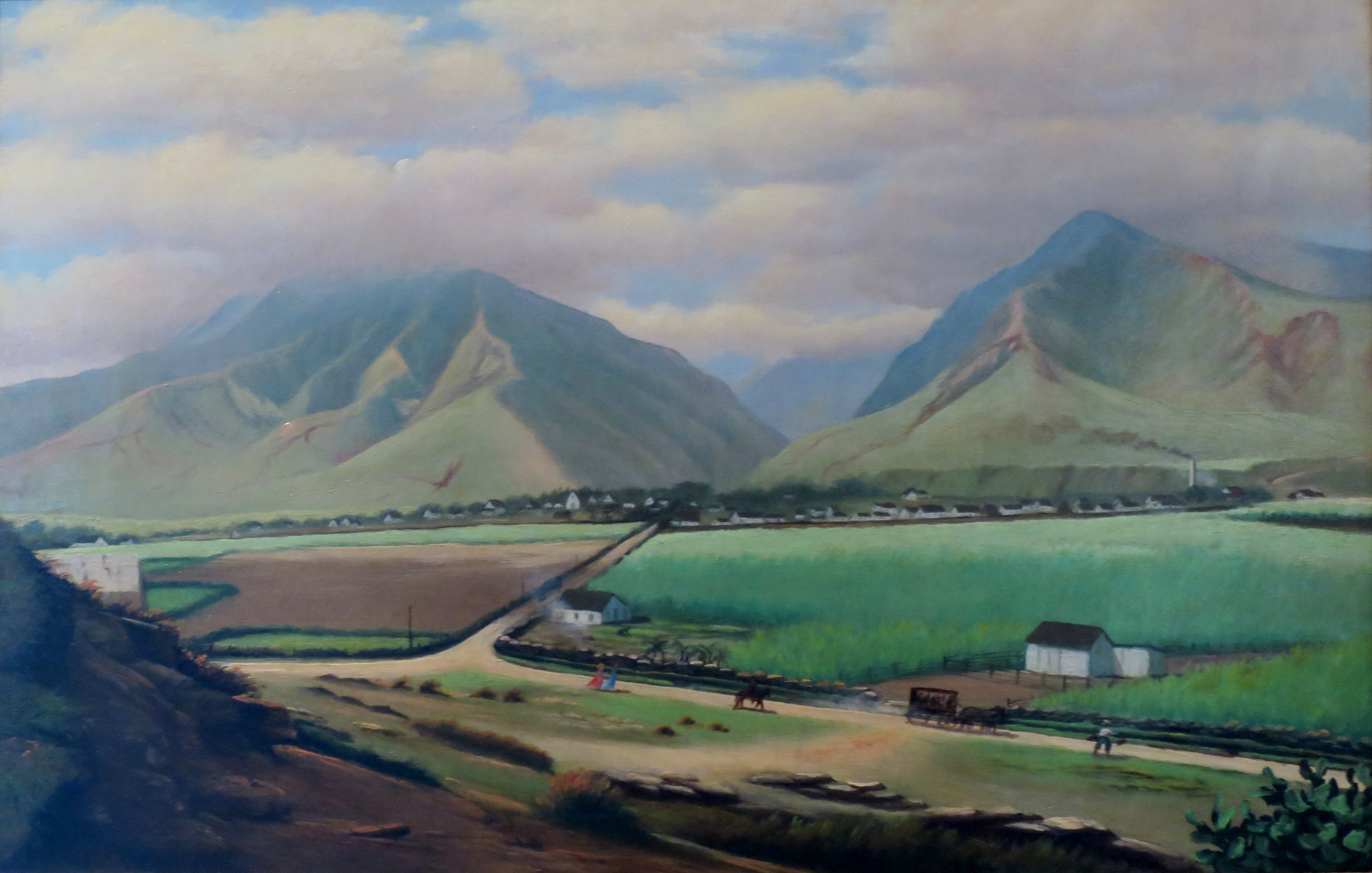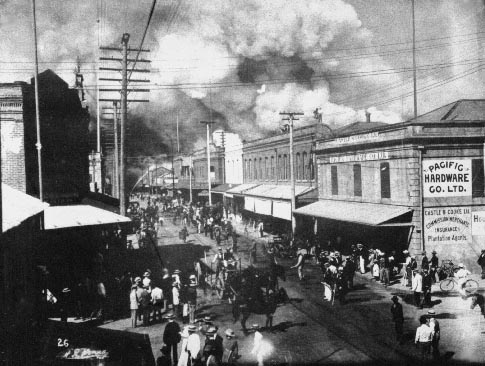|
Izumo-taishakyo
is a Japanese Shinto grouping. It was established by Senge Takatomi (1845–1918), the 80th head priest of Izumo-taisha in 1882, as one of the original thirteen sects of ''Kyoha Shintō Rengokai'' (Association of Sectarian Shinto), during the Meiji era in Shimane Prefecture. Overview There is a headquarters (Cultural Affairs Office) on the precincts of Izumo Taisha in Shimane Prefecture and Izumo City, and the staff of Izumo Taisha is also the staff of Izumo-taishakyo. However, while Izumo-taisha itself is affiliated with Jinja Honcho, legally speaking, Izumo-taishakyo is an independent religious corporation separate from Jinja Honcho and associated with Kyoha Shintō Rengokai. Thus Izumo-taishakyo walks a middle ground between Shrine Shinto and Sect Shinto. During the Meiji Period, priests from Izumo Taisha were collected to participate in the creation of a centralized State Shinto. However, due to conflicts primarily with the traditions of Ise-jingu, the Izumo traditio ... [...More Info...] [...Related Items...] OR: [Wikipedia] [Google] [Baidu] |
Sect Shinto
refers to several independently organized Shinto groups that were excluded by Japanese law in 1882 from government-run State Shinto. Compared to mainstream Shrine Shinto, which focuses primarily on rituals, these independent groups have a more developed theology. Many such groups are organized under the . Before World War II, Sect Shinto consisted of 13 denominations, which were referred to as the 13 Shinto schools. Since then, there have been additions to and withdrawals from membership. Whereas Shrine Shinto is an aggregation of various shrines and customary beliefs in different parts of Japan (which became united under the Ise Grand Shrine after the Meiji period), Sect Shinto is based on the () school of philosophy. Tenrikyo was categorized as Sect Shinto but is often considered a separate monotheistic religion. History While its roots are in the late Edo period, Sect Shinto became more firmly established in the Meiji era after the Meiji Restoration. Its formation was sti ... [...More Info...] [...Related Items...] OR: [Wikipedia] [Google] [Baidu] |
Senge Takatomi
Baron Takatomi Senge was a Japanese priest and politician. He served as governor of their prefectures. He was Governor of Saitama from 1894-1897, Governor of Shizuoka from 1897-1898, and Governor of Tokyo from 1898-1908. He was also a member of the House of Peers. He was an organizer of the 1907 Tokyo Industrial Exhibition. He was a Shinto Priest and the founder of Izumo-taishakyo, and the 80th high priest of Izumo-taisha (an eightieth generation descendant of the first Izumo no Kuni no Miyatsuko). He founded the (, The Thursday Association) a Japanese political faction dedicated to representing the interests of barons over higher nobility. Ancestry The descendants of , the second son of , the sun goddess whose first son is the ancestor of the imperial family, have been, in the name of or governor of Izumo, taking over rituals because when Izumo-taisha was founded Amenohohi-no-mikoto rendered service to Okuninushi-no-kami. The family's conflict around 1340 made them s ... [...More Info...] [...Related Items...] OR: [Wikipedia] [Google] [Baidu] |
Izumo-taisha
, officially Izumo Ōyashiro, is one of the most ancient and important Shinto shrines in Japan. No record gives the date of establishment. Located in Izumo, Shimane Prefecture, it is home to two major festivals. It is dedicated to the god , famous as the Shinto deity of marriage and to Kotoamatsukami, distinguishing heavenly ''kami''. The shrine is believed by many to be the oldest Shinto shrine in Japan, even predating the Ise Grand Shrine. A style of architecture, '' taisha-zukuri'', takes its name from the main hall of Izumo-taisha. That hall, and the attached buildings, were designated National Treasures of Japan in 1952. According to tradition, the hall was previously much taller than at present. The discovery in the year 2000 of the remains of enormous pillars has lent credence to this. The shrine has been rebuilt every 60 to 70 years to maintain the power of the ''kami'' and maintain architectural techniques. This regular rebuilding process is called " Sengū" (遷宮) ... [...More Info...] [...Related Items...] OR: [Wikipedia] [Google] [Baidu] |
Aiea, Hawaii
ʻAiea (; , ) is a census-designated place (CDP) located in the City and County of Honolulu, Hawaii, United States. As of the 2010 Census, the CDP had a total population of 9,338. Geography ʻAiea is located at (21.385900, −157.930927). According to the United States Census Bureau, the CDP has a total area of , of which, of it is land and of it (5.71%) is water. Kamehameha Highway (Hawaii Route 99) divides most of ʻAiea from the shore of Pearl Harbor (mostly US government property), and the parallel major thoroughfare, Interstate H-1, further cuts the town's commercial district into two distinct areas. These east–west routes (and other streets, such as Moanalua Road) connect ʻAiea to Pearl City, immediately adjacent on the west, and Halawa, adjacent on the east. The residential area known as ʻAiea Heights extends up the ridgeline above the town. The communities of Newtown Estates and Royal Summit are located at the western edge of ʻAiea near its border w ... [...More Info...] [...Related Items...] OR: [Wikipedia] [Google] [Baidu] |
Honouliuli
Honouliuli National Historic Site is near Waipahu on the island of Oahu, in the U.S. state of Hawaii; it is the location of the Honouliuli Internment Camp, Hawaiʻi's largest and longest-operating Japanese internment camp, which opened in 1943 and closed in 1946. The site was designated a national monument on February 24, 2015, by President Barack Obama. The John D. Dingell, Jr. Conservation, Management, and Recreation Act, signed March 12, 2019, redesignated it as Honouliui National Historic Site. The internment camp held 320 internees. In Hawaii, where more than 150,000 Japanese Americans comprised more than one-third of the territory's population, only 1,200 to 1,800 were incarcerated. The site also became the largest prisoner of war camp in Hawaiʻi with nearly 4,000 individuals being held. Of the seventeen sites that were associated with the history of internment in Hawaiʻi during World War II, the camp was the only one built specifically for prolonged detention.Executive ... [...More Info...] [...Related Items...] OR: [Wikipedia] [Google] [Baidu] |
Pearl City, Hawaii
Pearl City is an Unincorporated area, unincorporated community and census-designated place (CDP) in the Ewa District, Hawaii, Ewa District and Honolulu County, Hawaii, City & County of Honolulu on the island of Oahu, Oahu, in the U.S. state of Hawaii. As of the United States 2020 Census, 2020 census, the CDP had a population of 45,295. Pearl City sits along the north shore of Pearl Harbor. Waimalu, Hawaii, Waimalu borders Pearl City to the east and Waipahu, Hawaii, Waipahu borders the west. The U.S. postal code for Pearl City is 96782. History Early-day Pearl City had an array of rice paddies and fields that were plowed with water buffalo that hauled a 9 two-wheeled cart. In the early 1880s, Pearl City was the final stop for Benjamin Franklin Dillingham's Oahu Railway and Land Company, Oahu Railway, a Stage wagon, mud wagon driven by a four-horse team. Lots for a yet-to-exist "Pearl City" went on sale in 1889, after completion of the rail line. Near the outskirts of Pearl City, ... [...More Info...] [...Related Items...] OR: [Wikipedia] [Google] [Baidu] |
Waipahu, Hawaii
Waipahu () is a former sugarcane Sugar plantations in Hawaii, plantation town and now census-designated place (CDP) located in the Ewa District on the island of Oahu, Oahu in the Honolulu County, Hawaii, City & County of Honolulu, Hawaii, Hawaii, United States. As of the 2020 United States census, 2020 census, the CDP population was 43,485. The U.S. postal code for Waipahu is 96797. History Waipahu is the name of an artesian spring.Michael T. Yamamoto, Nina Yuriko (Ota) Sylva, Karen N. Yamamoto, ''Waipahu...Recollections from a Sugar Plantation Community in Hawaii'', 2005. Albuquerque: Innoventions In Hawaiian language, Hawaiian, Waipahu is derived from ''wai'', meaning water, and ''pahū'', meaning "burst or explode"; combined, ''Waipahu'' means "water forced up (as out of a spring)". The early Native Hawaiians took pleasure in the cool and clear water gushing from the ground and named this spring Waipahu. Before the Western civilization set foot in Hawaii, the Hawaiians consid ... [...More Info...] [...Related Items...] OR: [Wikipedia] [Google] [Baidu] |
Wailuku, Hawaii
Wailuku is a census-designated place (CDP) in and county seat of Maui Island, Maui County, Hawaii, United States. The population was 17,697 at the 2020 census. Wailuku is located just west of Kahului, at the mouth of the Iao Valley. In the early 20th century Wailuku was the main tourist destination on Maui, though it has since been eclipsed with the rise of the resort towns such as Kaanapali. Historic sites in the town include Kaʻahumanu Church (named after Queen Kaʻahumanu, wife of Kamehameha I) which dates to 1876, the Wailuku Civic Center Historic District, the site of the Chee Kung Tong Society Building, and the Bailey House, a 19th-century former seminary and home that houses a history museum and the Maui Historical Society. There are two ancient temples near Wailuku, called — the Halekiʻi Heiau and the Pihanakalani Heiau. Both date back hundreds of years and were used for religious purposes by the native Hawaiians. Wailuku is served by Kahului Airpo ... [...More Info...] [...Related Items...] OR: [Wikipedia] [Google] [Baidu] |
Hilo, Hawaii
Hilo () is the largest settlement in and the county seat of Hawaii County, Hawaiʻi, United States, which encompasses the Island of Hawaiʻi, and is a census-designated place (CDP). The population was 44,186 according to the 2020 census. It is the fourth-largest settlement in the state of Hawaiʻi, the largest settlement in the state outside of Oahu, and the largest settlement in the state outside of the Greater Honolulu Area. Hilo is in the District of South Hilo. The city overlooks Hilo Bay and has views of two shield volcanoes, Mauna Loa, an active volcano, and Mauna Kea, a dormant volcano. The Hilo bayfront has been destroyed by tsunamis twice. The majority of human settlement in Hilo stretches from Hilo Bay to Waiākea-Uka, on the flanks of the volcanoes. Hilo is home to the University of Hawaii at Hilo, ʻImiloa Astronomy Center, as well as the Merrie Monarch Festival, a week-long celebration, including three nights of competition, of ancient and modern hula th ... [...More Info...] [...Related Items...] OR: [Wikipedia] [Google] [Baidu] |
Honden
In Shinto shrine architecture, the , also called , or sometimes as in Ise Shrine's case, is the most sacred building at a Shinto shrine, intended purely for the use of the enshrined ''kami'', usually symbolized by a mirror or sometimes by a statue.JAANUS The building is normally in the rear of the shrine and closed to the general public. In front of it usually stands the ''Haiden (Shinto), haiden'', or Oratory (worship), oratory. The ''haiden'' is often connected to the ''honden'' by a ''Heiden (Shinto), heiden'', or hall of offerings. Physically, the ''honden'' is the heart of the shrine complex, connected to the rest of the shrine but usually raised above it, and protected from public access by a fence called ''tamagaki''. It usually is relatively small and with a gabled roof. Its doors are usually kept closed, except at matsuri, religious festivals. Kannushi, Shinto priests themselves enter only to perform rituals. The rite of opening those doors is itself an important part o ... [...More Info...] [...Related Items...] OR: [Wikipedia] [Google] [Baidu] |
Honolulu, Hawaii
Honolulu ( ; ) is the List of capitals in the United States, capital and most populous city of the U.S. state of Hawaii, located in the Pacific Ocean. It is the county seat of the Consolidated city-county, consolidated City and County of Honolulu County, Hawaii, Honolulu, situated along the southeast coast of the island of Oahu, Oʻahu, and is the westernmost and southernmost major U.S. city as well as westernmost and southernmost U.S. state capital. It is also a major hub for business, finance, hospitality, and military defense in both the state and Oceania. The city is characterized by a mix of various Asian culture, Asian, Western culture, Western, and Oceanian culture, Pacific cultures, reflected in its diverse demography, cuisine, and traditions. is Hawaiian language, Hawaiian for "sheltered harbor" or "calm port"; its old name, , roughly encompasses the area from Nuʻuanu Avenue to Alakea Street and from Hotel Street to Queen Street, which is the heart of the present dow ... [...More Info...] [...Related Items...] OR: [Wikipedia] [Google] [Baidu] |
IZUMO TAISHA-KYO MISSION 01
Izumo (出雲) may refer to: Locations * Izumo Province, an old province of Japan * Izumo, Shimane, a city located in Shimane Prefecture ** Izumo Airport * Izumo-taisha, one of Japan's most ancient and important Shinto shrines Ships * ''Izumo''-class multi-purpose destroyer, a class of multi-purpose operation destroyer operated by the Japan Maritime Self-Defense Force ** JS ''Izumo'', lead ship of this class * Japanese cruiser ''Izumo'', an armored cruiser operated by the Imperial Japanese Navy Fiction * SDF-4 ''Izumo'', a spaceship in the ''Robotech'' universe * '' Izumo: Takeki Tsurugi no Senki'', an anime series * ''Kunisaki Izumo no Jijō'', a Japanese manga series * Izumo Kamurogi, the commander of Altair forces in the anime series ''Aquarion Evol'' * Daisuke Izumo, the main character in the anime series ''Ninja Captor'' who portrayed by Daisuke Ban Other * ''Izumo'' (train), a former train service in Japan * ''Sunrise Izumo'', a train service in Japan * ''IZUMO1 Iz ... [...More Info...] [...Related Items...] OR: [Wikipedia] [Google] [Baidu] |






